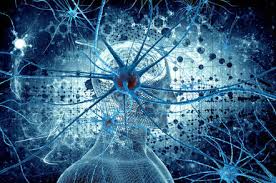There are no duplicates. Yet, we may say, are not some thoughts duplicates? The variations may indeed be slight, but variations are always present. A thought transmitted knowingly or unknowingly by A. is not precisely the same thought when it reaches receiver B.
The thought originally held by A. is still retained by A., yet a seemingly identical thought reaches B. A. has lost nothing. That is, in trying to send the thought, in trying to duplicate the thought, A. still retains it. So what is passed on to receiver B.? This is rather important, since an explanation will do much to account for the frequent difference that occurs in telepathic communications.
Whether or not- A. the sender, knowingly transmits this apparent duplicate, at the point of its transmission, the sender forms an electrical impulse pattern that is supposed to duplicate the original thought. But no such identical duplication is possible, as far as I know, within reality of any kind.
A side note: identical twins are hardly identical, for example.
As soon as the attempt is made to duplicate the thought, we find the attempt itself strains and pulls; the impulse changes minutely, or to a greater degree. The point I want to make is that any attempt at duplication actually forces the thought it is already a new thought, bearing great resemblance to the original. But it is not the original thought.
Prime identities cannot be duplicated. Exact duplication is always an effect of insufficient knowledge. In some cases two thoughts may appear identical, but whether or not examination can show it, such exact duplication is impossible. Now when receiver B. receives a transmitted thought, he may react and interpret that part of the thought that is similar to the original.
He or she may , on the other hand, react to and interpret that portion of the thought that is not similar. He or she may react to and interpret the similarity of the difference. His or her reactions depend upon several circumstances, including the intensity of the electrical pulsations that compose the thought, and his or her own inner facility in reaching to particular ranges of intensities.
Habitually, individuals establish overall frequencies that they are able to handle, for various reasons. An individual will therefore feel more at home operating within certain frequencies. The original thought is used as a pattern for the creation of a new electrical reality which may or may not be directed at any given receiver. It is obvious that the attempt to duplicate is present: were it not for this attempt to duplicate, then there would be little similarity between any separate identities.
The nature of the thought that is received by B. is determined by many factors. We shall consider but a few of these. These include the original intensity of the thought as A. ; the familiarity or unfamiliarity of the range of frequencies that compose the thought to any intended receiver.
The receiver will understand and interpret in general the intensity range he is in the habit of using himself. Some, or a portion of the transmitted thought, may fall within his range and some may not. He or she may pick up the portions of the thought which are similar to the original thought which are similar to the original thought, in which case some scientific proof of sorts can be achieved. It can happen, however, that the dissimilarity is what falls within his or her particular accustomed range, in which case proof will be inadequate.
Emotions also possess an electrical reality. Thoughts formed and sent out within the impulse range of emotion often succeed because of the peculiar nature of the emotional electrical impulses themselves. They have a particularly strong electrical mass. They also usually fall within powerful intensities, for reasons. Thoughts formed under a strong emotional impetus will carry greater vividness, have a greater tendency toward duplication, and are apt to be interpreted with some success.
Also, all individuals have had familiarity with emotions as they exist within electrical intensities, and are accustomed to reacting to them. The whole process in instantaneous. However, the thought which is now an approximation of the original thought is changed once more by the receiver himself or herself. He or she does not actually interpret the thought itself. He or she interpret the thought itself. He or she interprets its meaning and forms a new thought identity.
Action, the very action of transmission, alters the nature and electrical reality of the thought itself.
Our imaginary sender A. does not transmit a given thought. He or she does not even send an exact duplicate. Nor does the receiver receive the thought in the same condition. The original thought is retained by A. A. forms a thought as nearly identical as possibilities allow it to be. This he or she transmits to B. But B. can’t receive the thought in its present condition, for the action of receiving a thought also changes it. He or she forms a thought as nearly identical as possible for him and interprets it.
Action can never be considered apart from that which is seemingly acted upon, for action becomes part of structure. Action begins from within and is a result of inner vitality inherent in all realities. Action is not alone. It is not an identity. ACTION IS A DIMENSION OF EXISTENCE.














